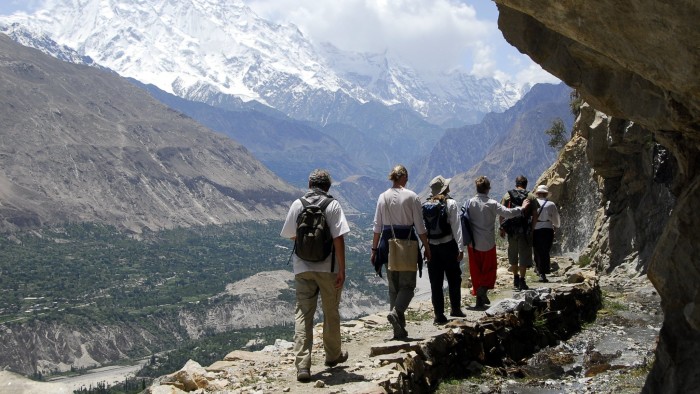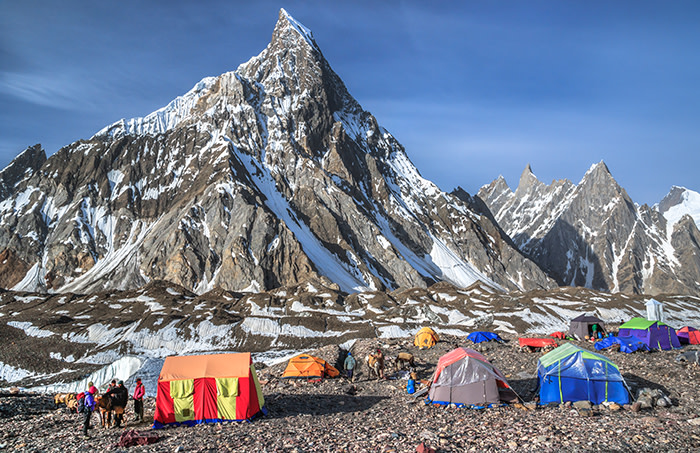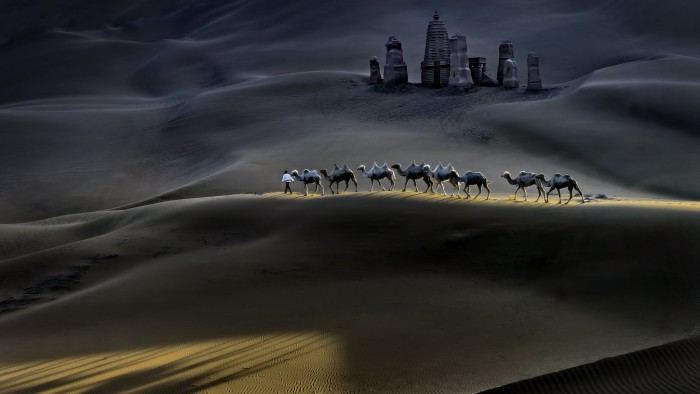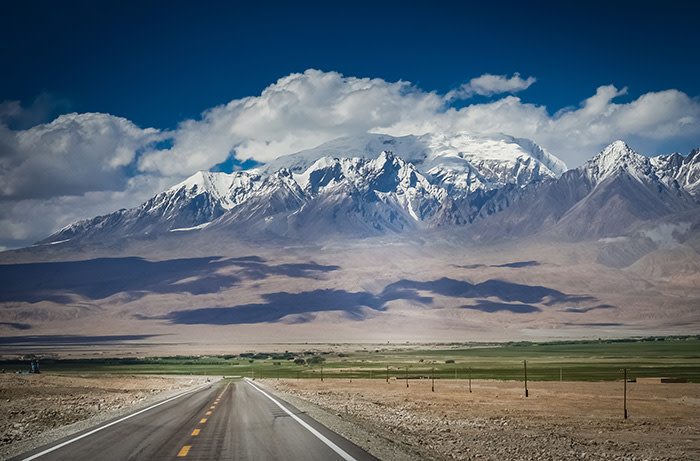Travel in retirement: The rise of the older adventurer

Roula Khalaf, Editor of the FT, selects her favourite stories in this weekly newsletter.
“Being stopped by the Chinese army was fairly hair-raising,” says Bill Marr-Johnson with a chuckle. “We had come across a military manoeuvre — tanks rumbling up and down, field guns dug in. They kept us for three hours. We were on edge because we had no idea how they were going to treat us.”
That was on a three-week trip through Tibet, staying at a mix of hotels and truckers’ stops with metal beds in concrete-floored dormitories. “They were fine,” he says, “the only problem was the long-drop toilets, which are never cleaned.” His other recent expeditions have included visits to Vietnam, Azerbaijan, Abkhazia (the would-be autonomous state between Russia and Georgia), China’s Taklamakan Desert, and many of the ‘Stans.
They are the sort of destinations and travellers’ tales any returning gap year student would be delighted to have under their belt, but Mr Marr-Johnson is not on his way up to university. He is 72.
For his next trip, the retired chartered surveyor from Clapham, south west London, will visit Papua New Guinea, travelling by boat into the tribal hinterlands. After that, Jerusalem, Oman and a traverse of the north Caucasus are on his list. “The moral is: do it while you can,” he says with evident glee.
And though his wanderlust is clearly prodigious, Mr Marr-Johnson is less of an outlier than part of what the travel industry is recognising as a key trend.
Where once travel in retirement meant cruises, golf, cultural weekend trips and winter sun beach breaks, recent years have seen a surge in demand for exotic and adventurous travel.
“We have really noticed it in the last five to seven years,” says Jonny Bealby, the founder of tour operator Wild Frontiers, with whom Mr Marr-Johnson has often travelled.
“If you go to the travel shows you see the same demographic. The baby boomers have seen their kids come back from gap years and adventures and they are thinking, hang on, we never had a chance to do that. Unless you were on the hippy trail — and that was a tiny minority — life in the 1970s was quite serious, you had to get on and get a career going. Now they have made their money, paid off the mortgage, the kids have left home, they have got decent pensions, and they want to spend it on experiences.”
Figures from the UK Office for National Statistics show the number of British over-65s travelling overseas leapt by 13.7 per cent from 2014 to 2016. A separate survey from the Association of British Travel Agents suggests that, after a significant increase in the 12 months to August 2017, over-65s are now more likely to take foreign holidays than any other age group.
But it is at the more adventurous end of the travel industry that the effect is being most keenly felt.
Last year, Mr Bealby led a walking group across a 4,100m pass in Kyrgyzstan, including one group member who was 74, “and he was far from the slowest, not by a long chalk”.
Where to visit
K2 base camp

The world’s second-highest mountain but, according to mountaineers, much harder to climb than Everest
Taklamakan Desert, China

The world’s second-largest shifting sand desert, also known as the “Place of Ruins” or the “Sea of Death”
Karakoram Highway

Linking western China and Pakistan, this road is famous for its mountain scenery and the highest international border
Wild Frontiers also recently took a 74-year-old to the base camp of K2 in Pakistan. In October last year, a month-long marathon trek around Kanchenjunga, the world’s third-highest mountain, organised by Jagged Globe, another specialist tour company, included one hiker aged 75, one 74 and had an average age of 65. Antarctic Logistics and Expeditions has taken tourists as old as 90 to the South Pole.
The effect is being even more pronounced in North America, where Norman Howe, chief executive of Toronto-based Butterfield & Robinson, sees it creating “the makings of massive and sustained growth in luxury active travel”.
Annual leave for employees in the US and Canada is typically far less than elsewhere, meaning many longer, more adventurous trips are only really viable after retirement.
“It was the front end of the boomer demographic who started pushing the trend,” says Mr Howe. “The first boomers started hitting the conventional retirement age around 2010, and, as with everything, they defied convention. Rather than heading to Florida and taking up golf, they hit the gym as hard as they hit the road. They skipped vacations through their working lives and are now making up for lost time.”
George Butterfield, the company’s founder, is still travelling widely at 78, and last year the company took a 92-year-old on its walking and cycling trip to Japan. Electric bikes have helped Mr Butterfield and other cycling specialists to extend the age range of clients, just as better hygiene and health and safety have removed much of the fear of travelling to developing countries.
There are other facilitating factors too. In many regions, the rapid increase in domestic low-cost flights has removed the need for lengthy overland bus journeys. Those travelling overland, on the fabled Karakoram Highway between Pakistan and China, for example, will find the road surface much improved. The reach of mobile communications means travellers need never fear being out of touch with family at home. And easier access to travel insurance has helped too, typically now being easily available to those under 75, and beyond that for a higher premium and with more conditions.
But by far the biggest factor, though, has been the growth in the number of adventure tour operators and the range of trips they offer. Joining a group of other travellers, with a guide to ensure safety and smooth logistics, is far easier than planning an independent trip, which in turn emboldens travellers to try ever more exotic destinations. In turn, the emergence of a willing and wealthy older clientele has helped more adventure tour operators to set up and expand, then encouraged them to compete with one another to offer increasingly off-the-beaten-track trips.
“Last year, I went to one travel show and found at least half a dozen companies offering tours to northern Afghanistan,” says Mr Marr-Johnson. “And even if you pick up a Saga brochure, they are doing some pretty interesting trips.”
So how would Mr Marr-Johnson feel about a nice cruise to the Canary Islands? The reply comes back quickly and firmly: “Not yet.”
Tom Robbins is the FT’s Travel Editor; Twitter: @TRtravels
Comments